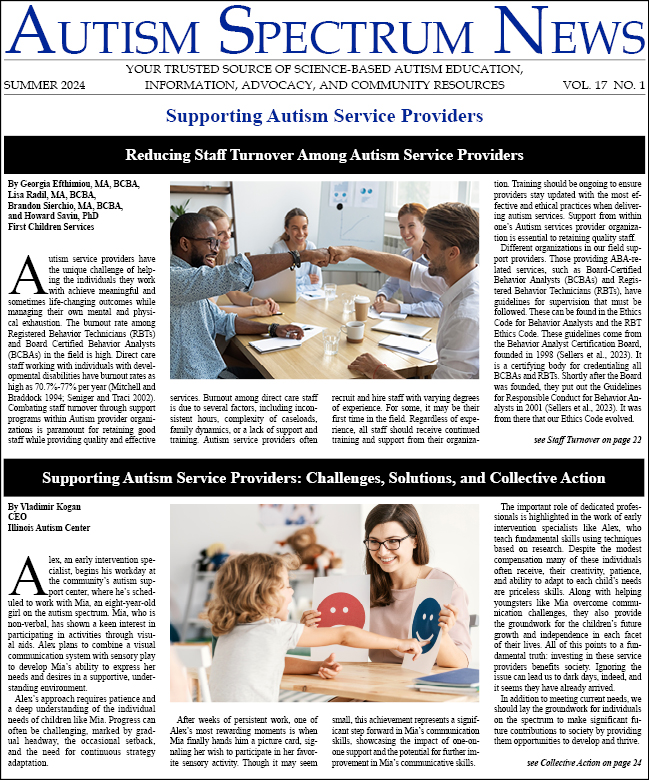-
Interdisciplinary Approach to Obtaining a Medical Diagnosis for Individuals With a Complex Behavioral Profile
Individuals with complex behavioral and medical profiles require an interdisciplinary approach due to multiple specialized areas of need. This approach allows interdisciplinary teams to efficiently address multiple presenting needs simultaneously and comprehensively (Boivin et al., 2021). This...
-
How to Create a Safe and Engaging Sensory Experience at the Pool
The pool is a great tool to use to cool down and engage individuals with autism spectrum disorder (ASD) over the summer. Not only can water exploration in the pool provide socialization opportunities in a natural environment, but water can meet essential sensory needs as it provides deep pressure...
-
Considerations to Accessing ABA Therapy Through Insurance
There are many services that can be beneficial for you to explore for your autistic child, including speech therapy, occupational therapy, and applied behavior analysis (ABA), and consulting with your child’s primary care physician or school team for recommendations on services is an important...
-
The Critical Role of a Caregiver in Navigating Systems of Care
No one knows your child better than you. When it comes to understanding their unique needs – you are the expert. This is critical for parents and caregivers of children with emotional, behavioral, and cognitive differences. Whether you are navigating systems of care, identifying areas of concern,...
-
Telehealth: Is It Right for Parents and Children?
Since the COVID-19 pandemic, the availability of telehealth for autism and other developmental disorders has exploded. Now that we are mostly post-pandemic, many parents are asking: “Is telehealth still the right choice for my child’s treatment?” There is no single answer. Below are several...
-
The Promise of Quality ABA: What Value-Based Care Means for Families
As the prevalence of autism spectrum disorder (ASD) continues to rise, parents of children with autism face significant challenges in obtaining high-quality and appropriate care and services. Delays in diagnosis, waitlists for treatment, shortage of available providers, high staff turnover, and a...
-
The Future of Autism and ABA: Predicting Outcomes
For children with autism, there are several competing forces at play that could potentially impact their futures. Legislation mandating coverage1 of applied behavior analysis (ABA) is making this valuable treatment accessible to all. But the rapid explosion in demand for ABA and infusion of private...
-
Challenges in the Diagnosis and Treatment of Older Autistic Women
Autism has a unique neurological structure with a wide variety of expressions. This diversity of strengths, challenges, and experiences is why autism is considered a spectrum disorder. It’s also what makes it challenging to diagnose and treat because the myriad of symptoms manifested in any given...
-
Person-Centered Early Intervention Program: A Whole Family Approach
The prevalence of autism is at an all-time high. Today, we all seem to know a parent of a child who has been diagnosed with autism spectrum disorder (ASD). According to estimates from the CDC, the rate of autism has more than tripled over the span of two decades: from one in 150 in 2000, to one in...
-
The Importance of Telediagnostics in ASD Diagnosis and Treatment
The COVID-19 pandemic brought significant challenges and opportunities for psychologists conducting diagnostic evaluations for people with suspected autism spectrum disorder (ASD). While there had been research on telediagnostics for ASD, at the start of the pandemic these procedures had not been...





